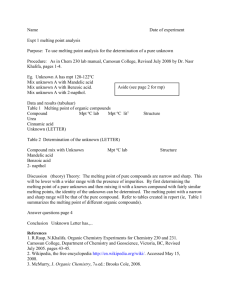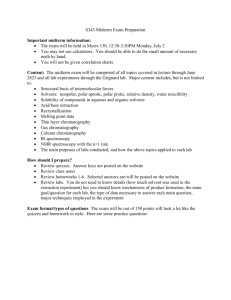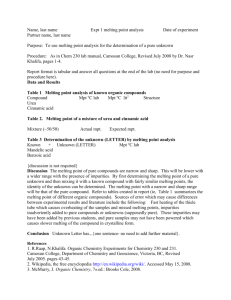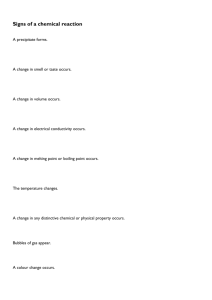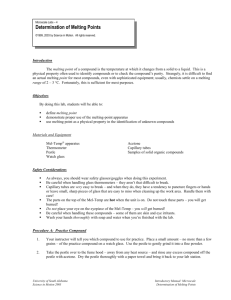Melting Point Verification of Compound Purity
advertisement
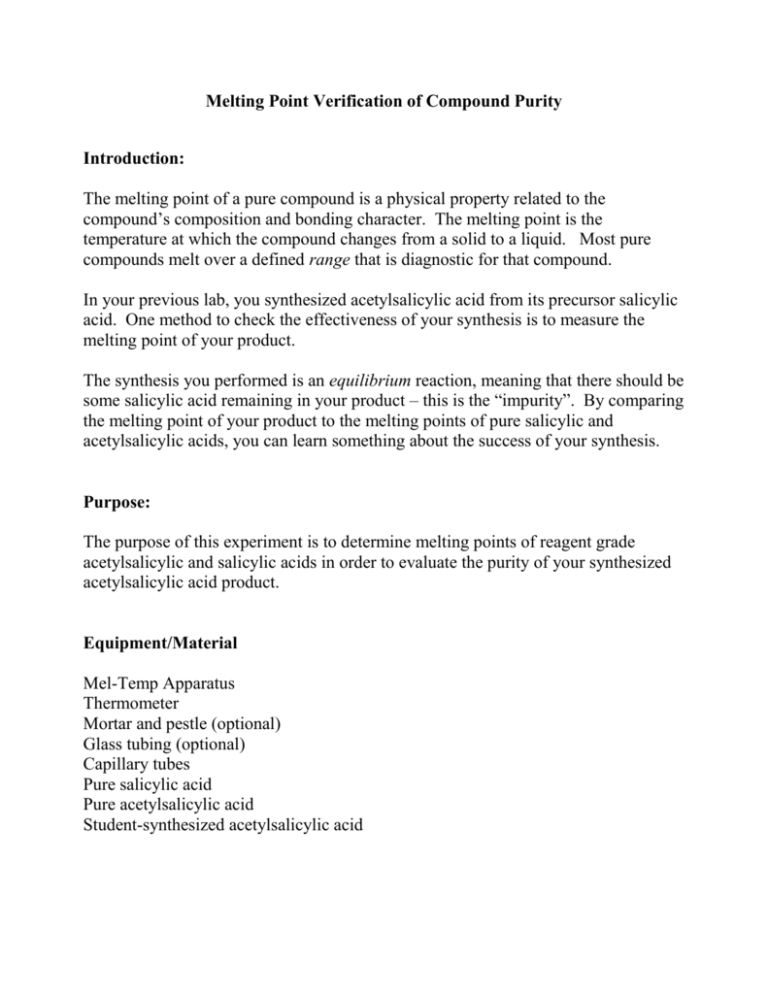
Melting Point Verification of Compound Purity Introduction: The melting point of a pure compound is a physical property related to the compound’s composition and bonding character. The melting point is the temperature at which the compound changes from a solid to a liquid. Most pure compounds melt over a defined range that is diagnostic for that compound. In your previous lab, you synthesized acetylsalicylic acid from its precursor salicylic acid. One method to check the effectiveness of your synthesis is to measure the melting point of your product. The synthesis you performed is an equilibrium reaction, meaning that there should be some salicylic acid remaining in your product – this is the “impurity”. By comparing the melting point of your product to the melting points of pure salicylic and acetylsalicylic acids, you can learn something about the success of your synthesis. Purpose: The purpose of this experiment is to determine melting points of reagent grade acetylsalicylic and salicylic acids in order to evaluate the purity of your synthesized acetylsalicylic acid product. Equipment/Material Mel-Temp Apparatus Thermometer Mortar and pestle (optional) Glass tubing (optional) Capillary tubes Pure salicylic acid Pure acetylsalicylic acid Student-synthesized acetylsalicylic acid Procedure: 1. Obtain three capillary melting point tubes and samples of salicylic acid, acetylsalicylic acid and your synthesized product. Be certain you have completed all massing of your product for percent yield calculations before you take any product for this procedure. 2. For each compound, place a small amount on a clean surface (a weigh boat would work well for these compounds). Tap the open end of the tube into the compound, invert the tube, and tap the closed end of the tube on the tabletop. This will deliver the compound to the bottom of the capillary tube. If the compound does not move into the bottom of the tube, take a piece of glass tubing and holding it perpendicular to the tabletop, drop the capillary tubes from a few inches, in the glass tubing, onto the table. The capillary tube will bounce within the glass tubing and deliver the compound to the bottom. 3. Place all three samples in their respective capillary tubes into the Mel-Temp Apparatus. Raise the temperature of the melting chamber by adjusting the dial on the apparatus. Slow incremental change in temperature will allow you to estimate melting points most accurately, so do not rush this step. You may run the temperature up to about 90 C at a relatively quick pace, then turn the dial back and proceed slowly from there. The compounds you are examining melt within the range of 100C - 200C. 4. Record the melting range of each compound, which begins when the compound begins to melt and ends when melting is completed. Data Table: Compound Compound Compound Melting range Melting range Melting range Expected range Expected range Expected range


